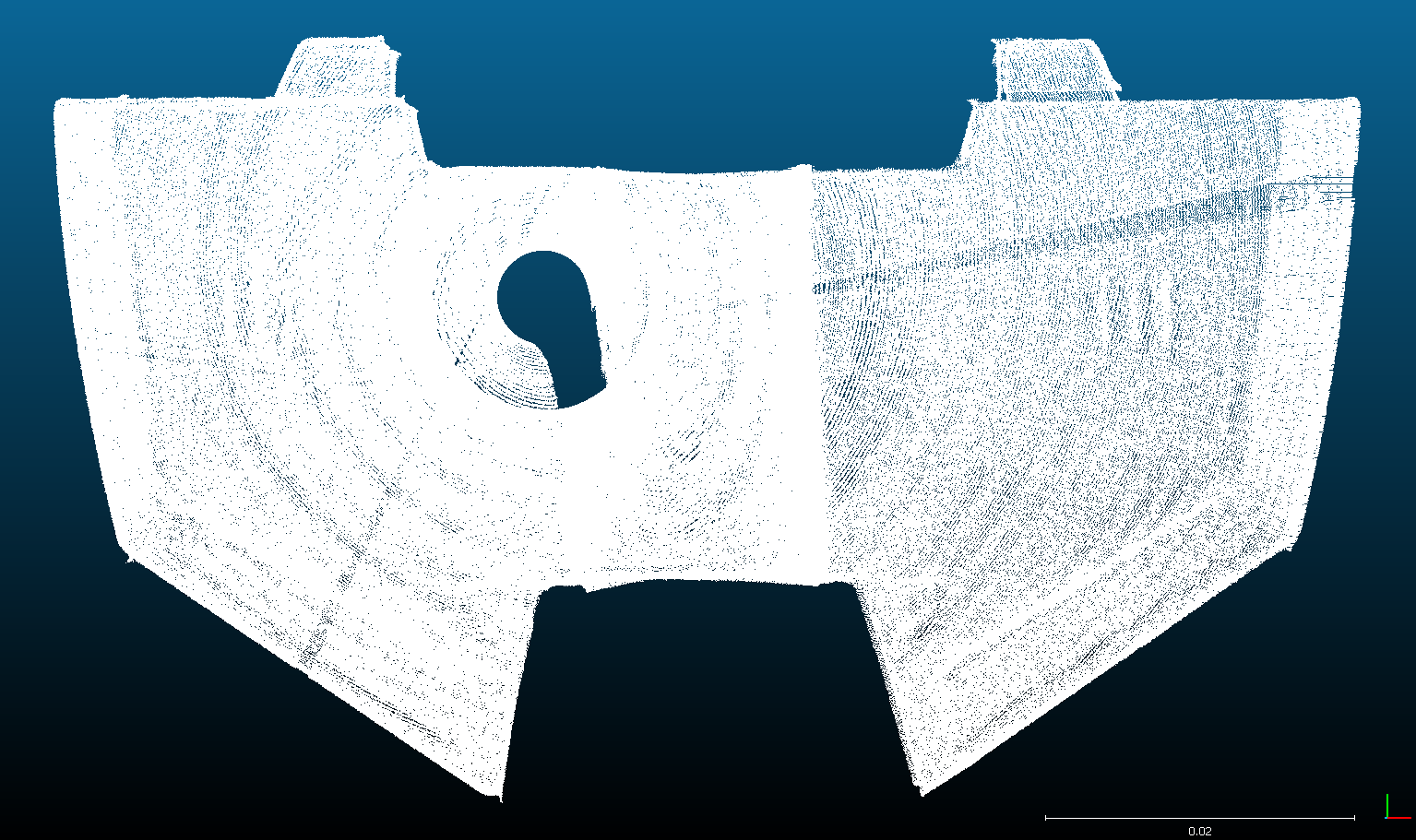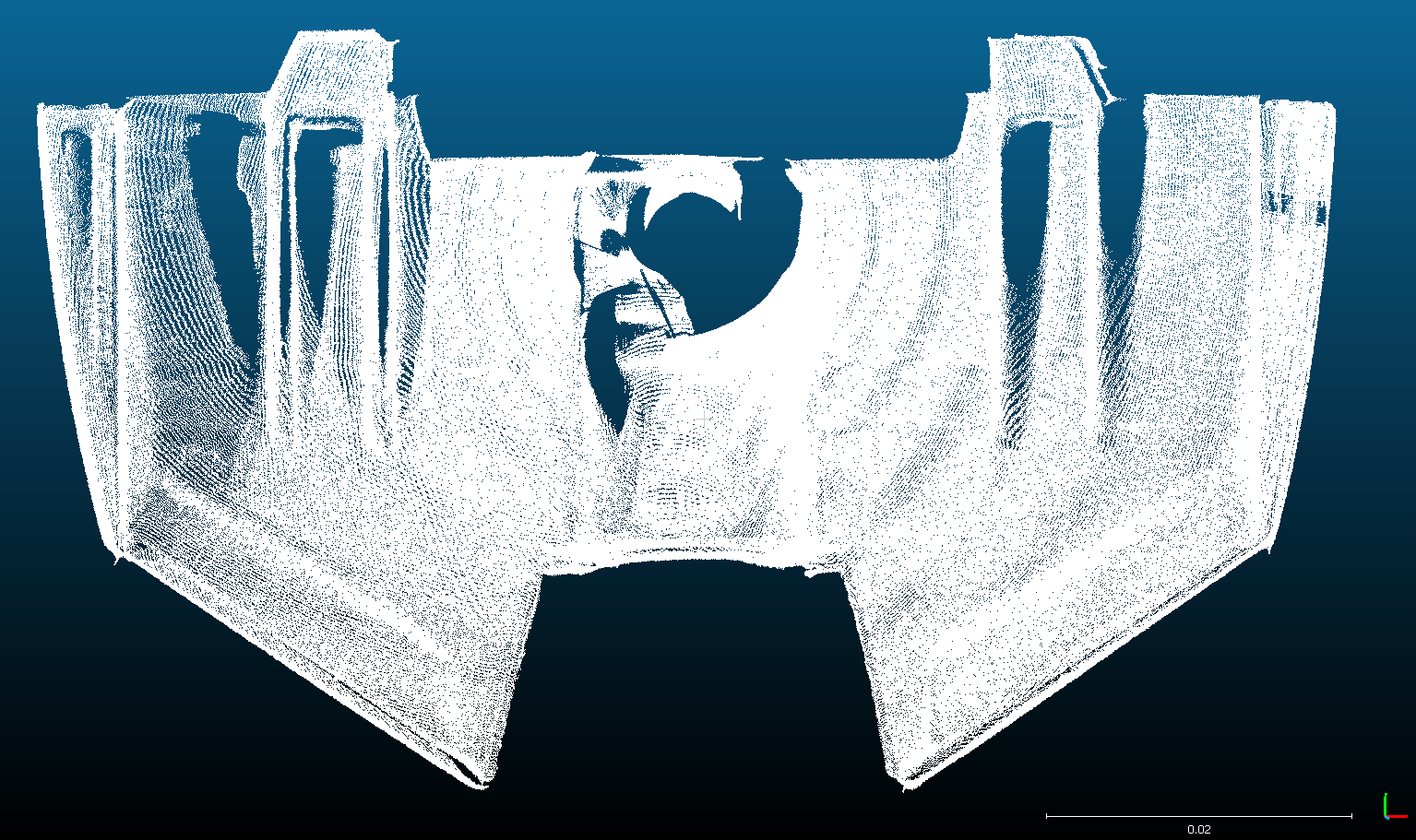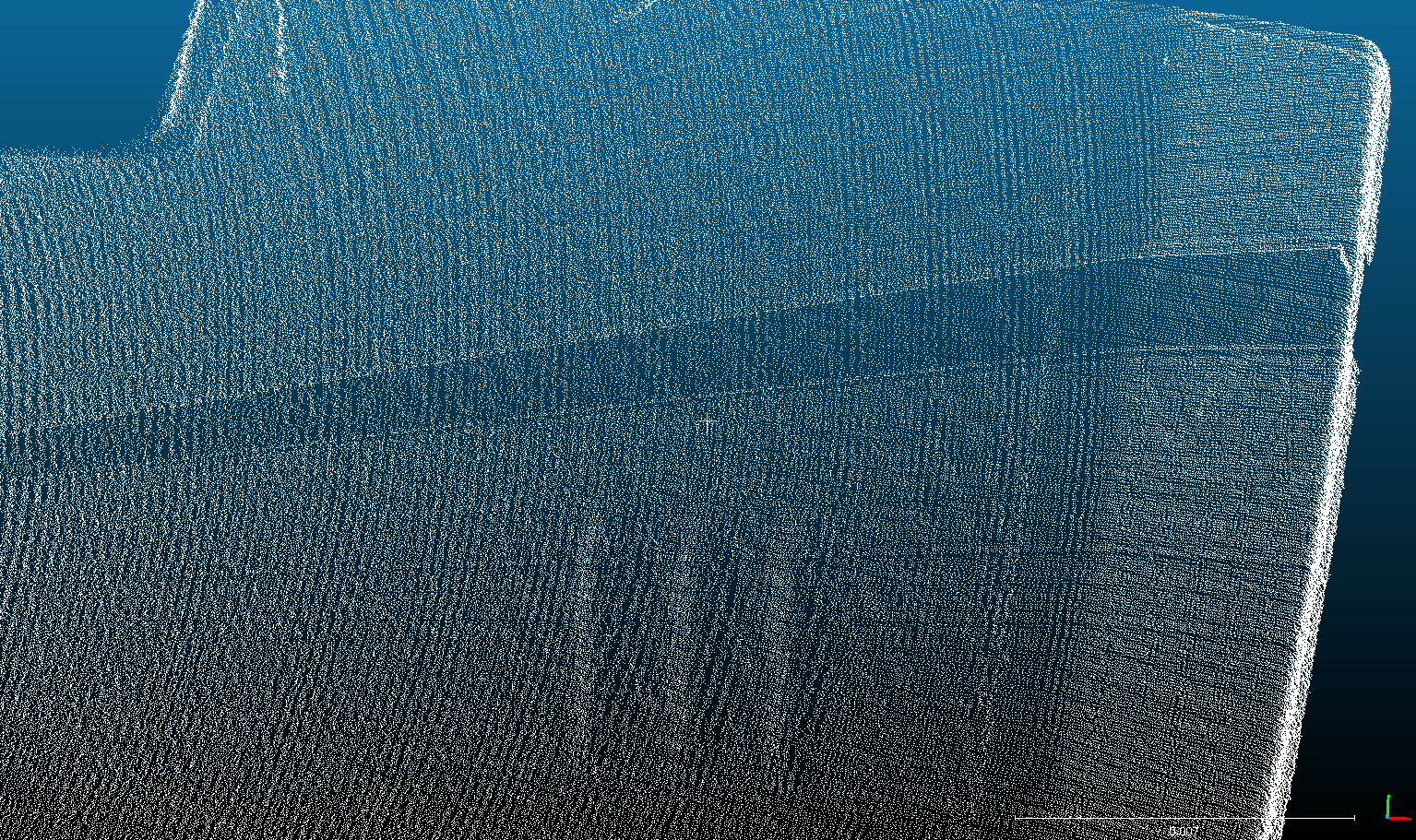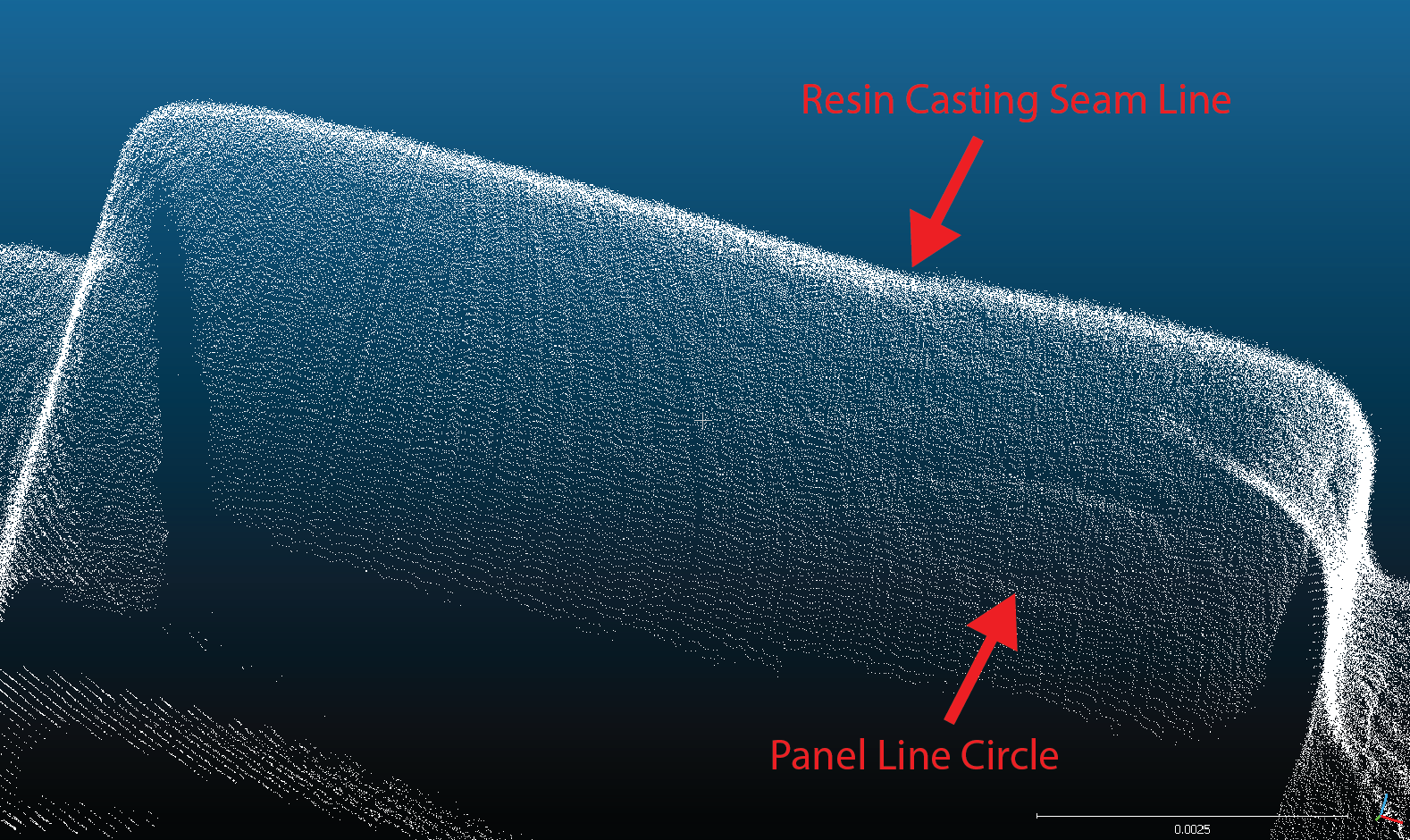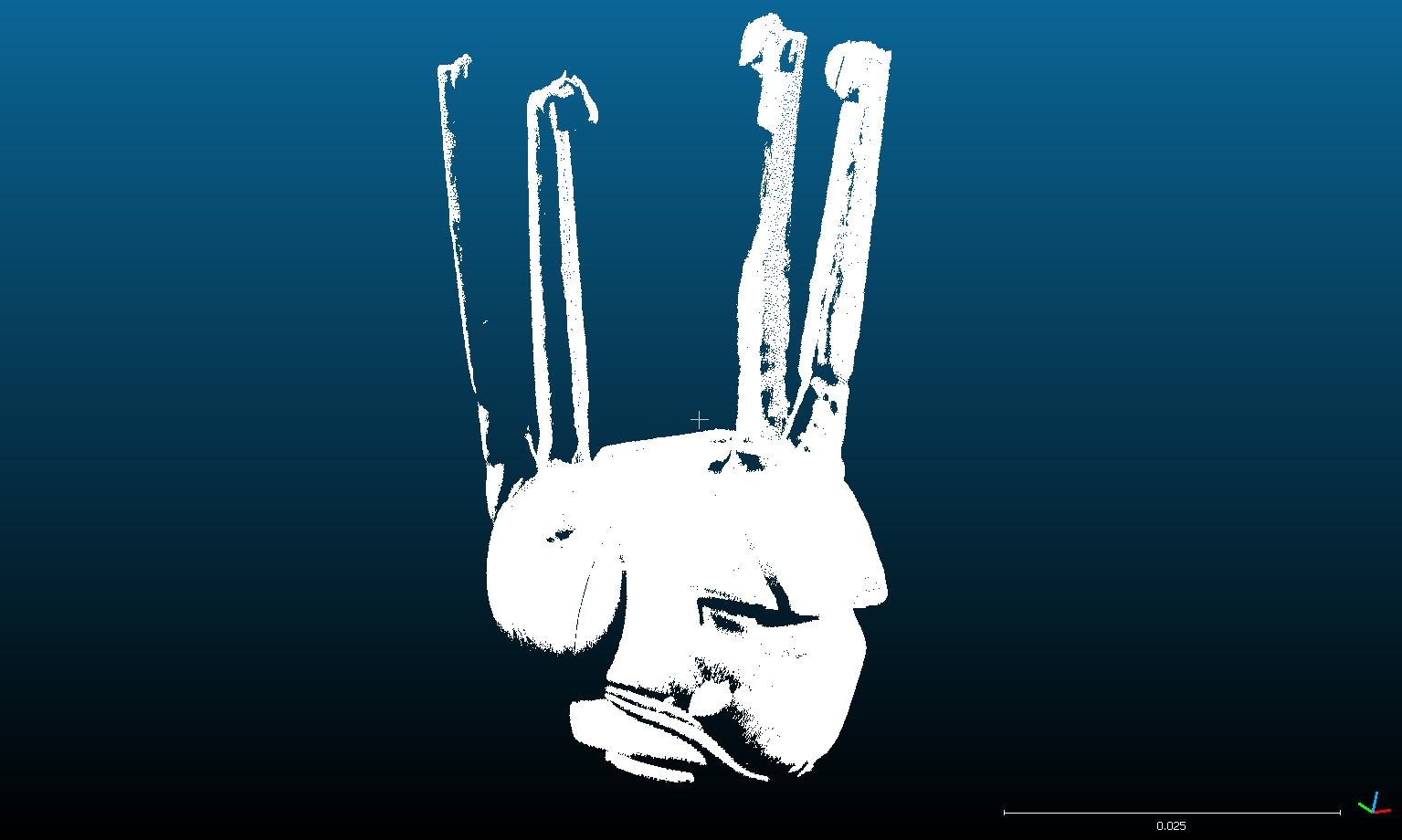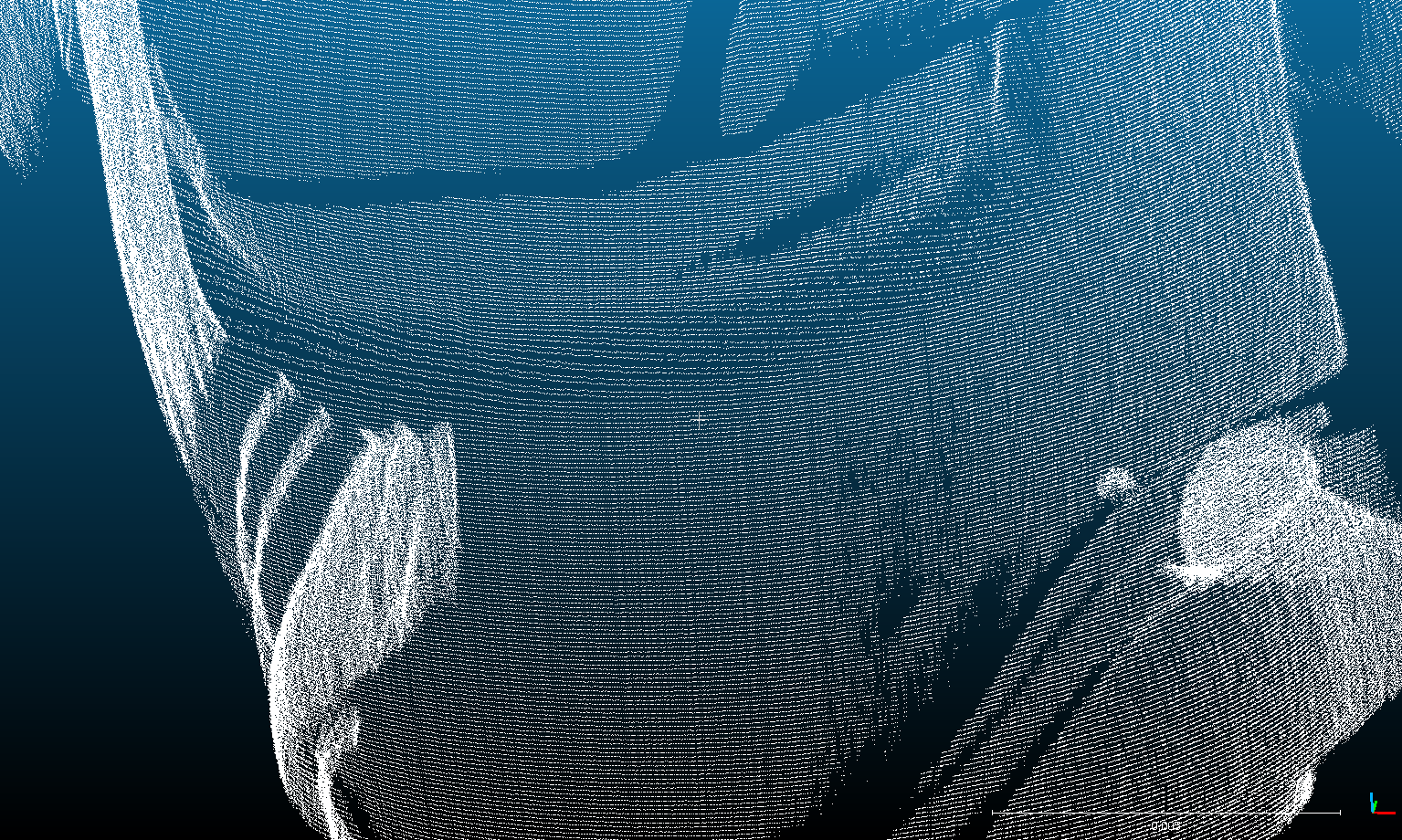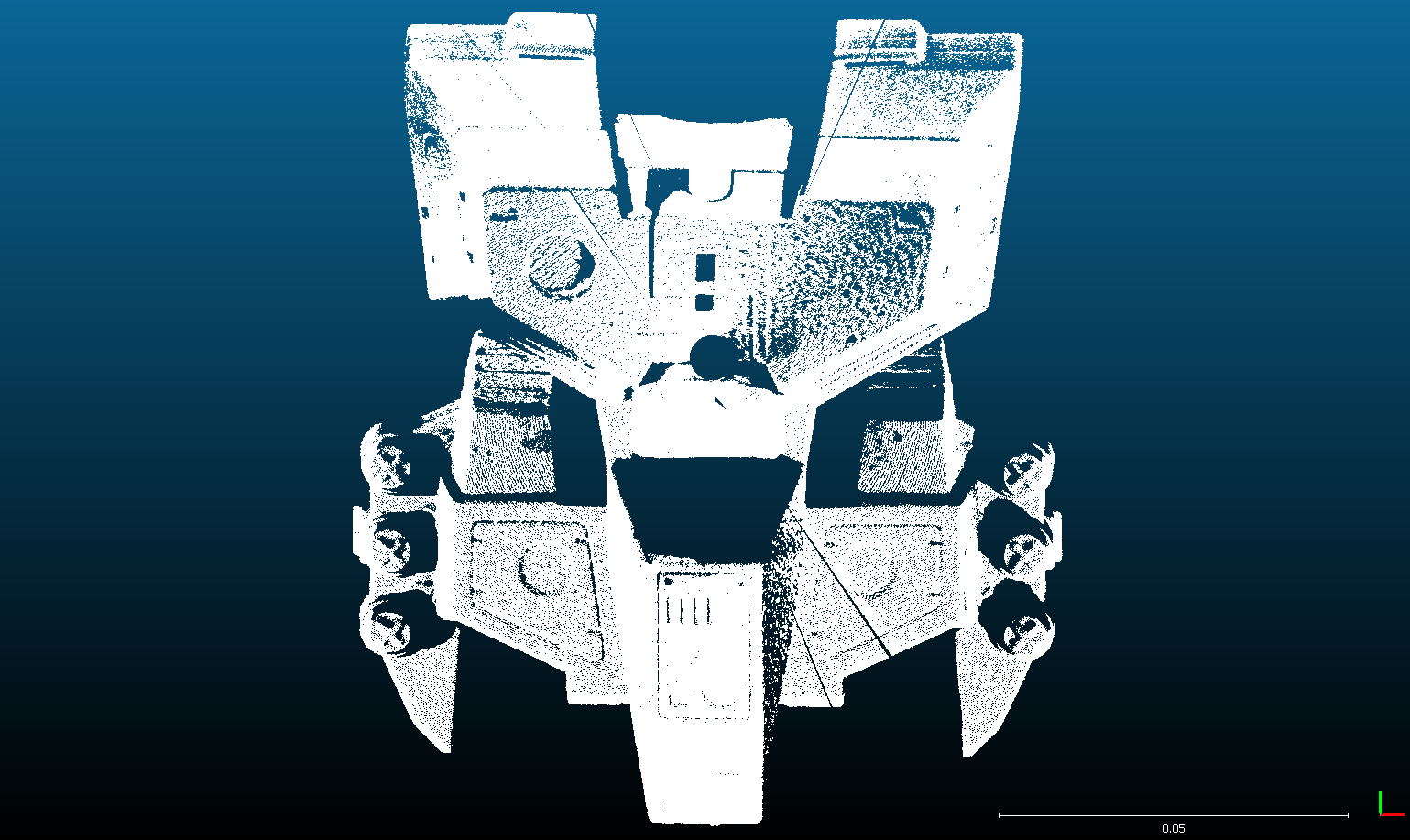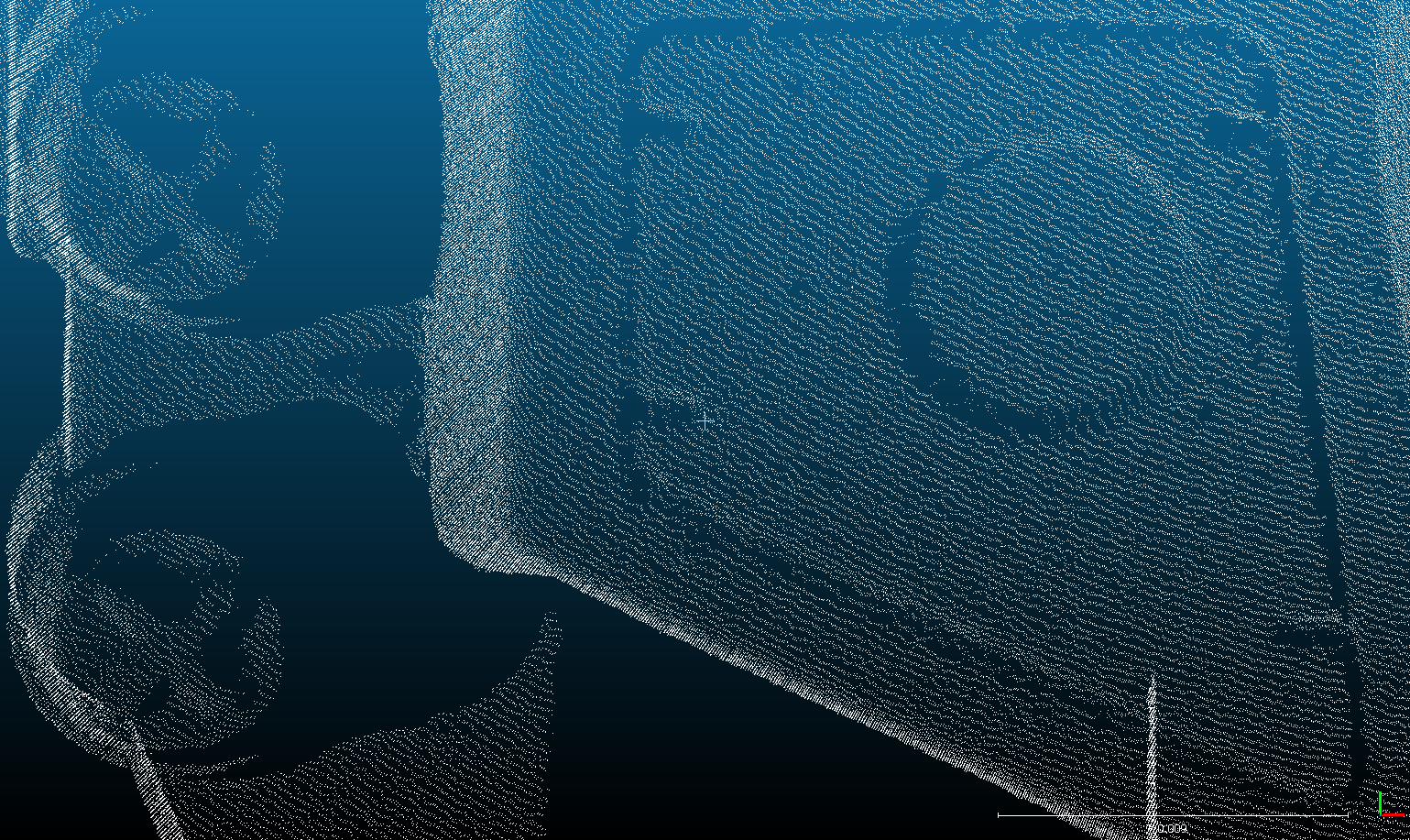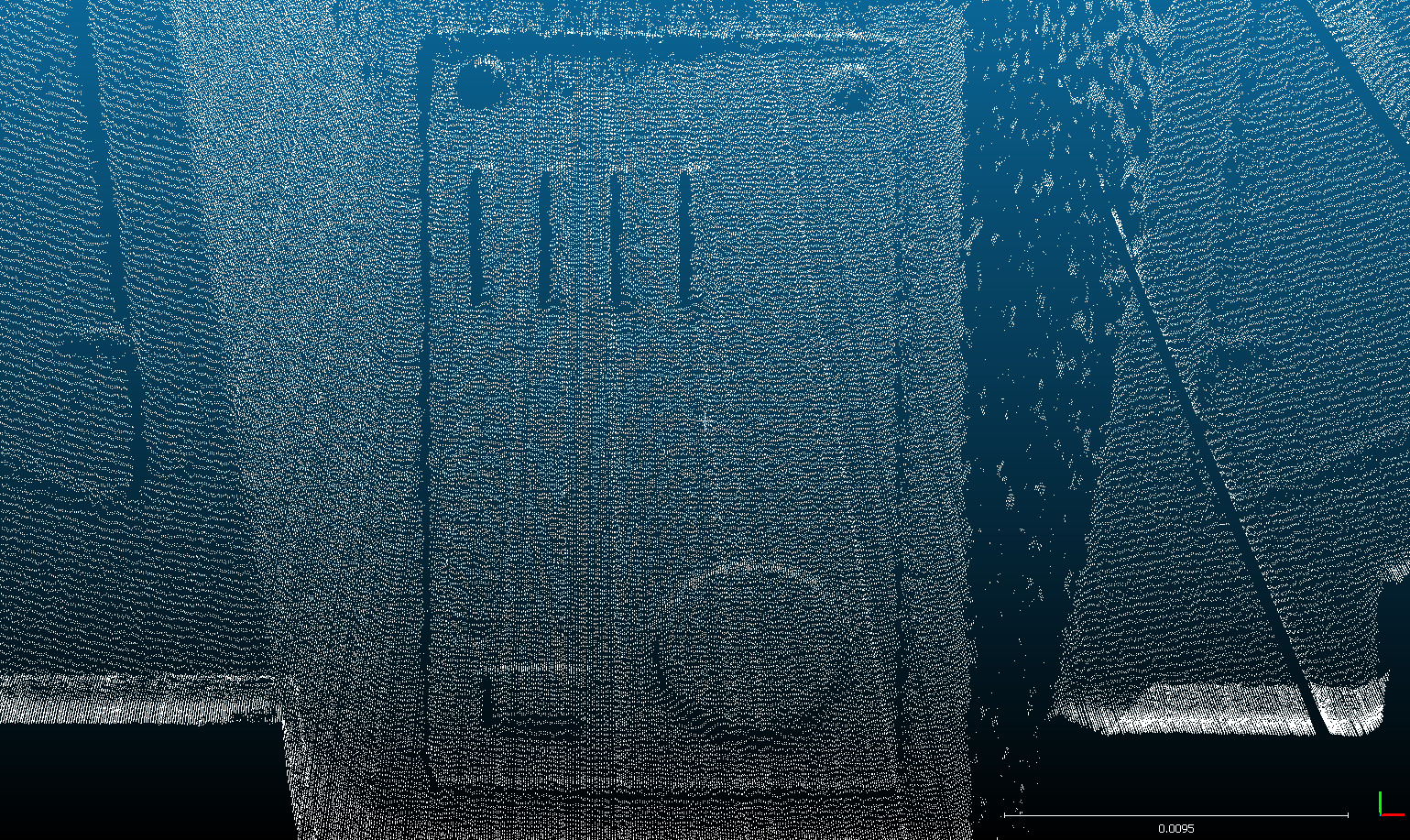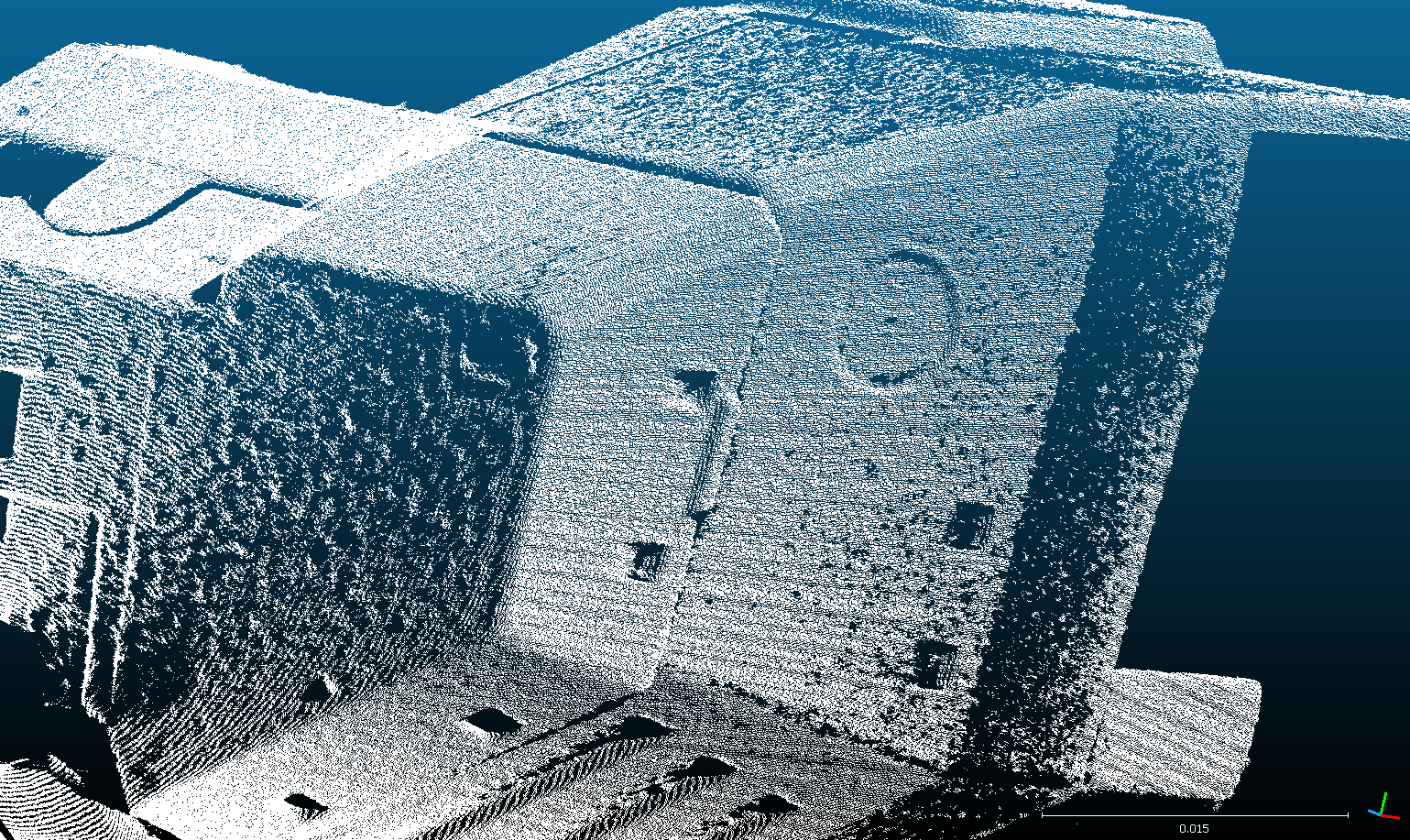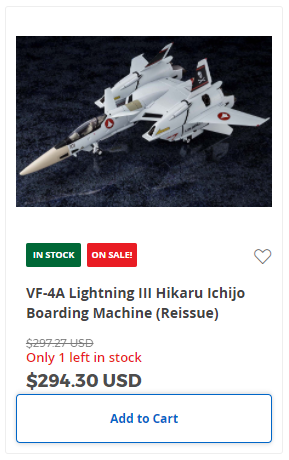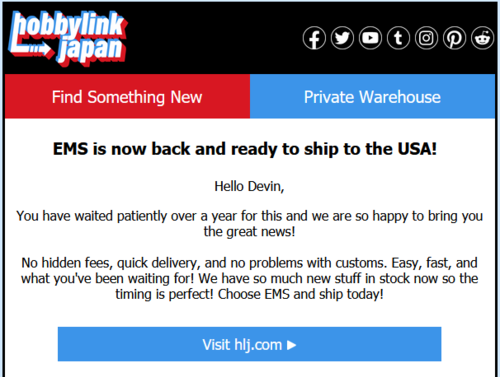-
Posts
2060 -
Joined
-
Last visited
Content Type
Profiles
Forums
Events
Gallery
Everything posted by Anasazi37
-
Finally received the "item is ready to ship" email from my proxy. Just in time for them to be closed for the long holiday weekend. Still, I was at least able to pay for shipping. If it helps anyone, they said the package weight was 1820g and the dimensions were 29 x 39 x 20 cm. They offered three shipping options: EMS ($57), DHL ($50), or FedEx ($58). I went with FedEx because the other two are "delivered" by my local post office. I have quotes around that because what actually happens is that I have to drive there to pick stuff up. For just a little more, FedEx brings it right to my door. One less middleman, one less opportunity for my precious 1D to get lost or damaged.
-
I'm still on the fence about this release. On the one hand, my goal with collecting Delta valks has been to get just enough to cover all the kinds of things that have been released, but not complete the full Flight. So I have a Messer with Super Parts and Lil Drakens (flying alongside), Arad with Armor, and Keith with Lil Drakens. The AX is a new variant, so I can probably justify buying it that way. On the other hand, buying it would just encourage Bandai to release ten more Hayate valks as reissues, lottery exclusives, or Malibu Stacy variants instead of giving us other things we actually want.
-
Ouch. That was a fast entry into the club. Still waiting to hear from my proxy. They tend to be slower to process orders compared to other services, so I'm not worried--yet.
-
For my collection of rare resin-cast parts, I'm going for reproduction-grade scans, but for other projects, it can be more about getting the basic shape of the object and then doing customization on top of that. I *think* calibration is starting to improve. These are front and back scans of a 1/55 chestplate, where each one is actually two scans combined. The third image shows how for the front scan, one of the two contributing scans had a gap in coverage that was filled in by the other. I'll still do some automated alignment to get them even closer, but it's starting to look better.
-
Automation to the rescue for most of that, thank goodness. Since the scanner's raw output is a point cloud, I can run it through some pretty sophisticated open source software that builds a mesh, looks at the results to see how "smooth" things are in a local region around each point (which become the vertices of the mesh), and makes adjustments. It's not perfect, though, and you risk losing fine detail if you let the software be aggressive about making adjustments. So yeah, there will be some hand-tuning of meshes in traditional CAD software as well. I think most of those programs have "mesh cleanup" options, too. I know you can draw a polygon around a section and ask it to simplify the geometry, which usually means "make this smoother." Even in the current test/calibration setup, the scanner is picking up the very subtle resin casting seam line on the top of the VF-1S head and the little panel line circle right at the front, just above the visor.
-
Still fighting with the calibration process, but here's a quick single scan of a Chris Barretta 1/55 VF-1S head. I'm not zoomed in at all, so should hopefully be able to quadruple the resolution when the system is ready. I'll definitely have to combine multiple scans from different angles to create a good surface model.
-
I noticed that it popped back up for sale on MyKombini about a week ago: https://mykombini.com/en/july-2021/21403-dx-chogokin-macross-vf-1d-valkyrie-and-fan-racer-bandai-limited.html It's selling for ¥33990. That's less than eBay, but not by a lot. TWE items like this one rarely sell at MSRP after release, but keep an eye on Amazon Japan, Yahoo Japan, and the For Sale forum here for folks looking to offload extras. There's often a small window of time right before and after a release where the prices aren't horrific, but then they start to climb. For example, the DX Hayao and Max valks regularly go for ¥30000 on Mandarake these days. For a long time, they were closer to ¥27000. That's where the DX Roy is right now, but I expect him to join the 30K Club later this year.
-
The process of getting the system dialed in looks like it will take several weeks, if I'm being realistic. There's some weird stuff happening during calibration that I don't fully understand yet. Need to run a lot of diagnostics. I'll try to post some more test scans of Macross items soon, even if they are just initial versions. I'm thinking of scanning a Chris Barretta 1/55 VF-1S custom resin head next, just to see what this system can do. I'd love to make the design and software open source, and maybe get some community backing to make kits that people can assemble on their own, but first I need to sort some stuff out with the intellectual property lawyers at work. This Covid hobby project is *just* close enough to what I do for a living that I'll have to talk to them. That is going to be so much fun.
-
Yep, increasing the dwell time will definitely drive up the SNR. Lots of options to explore! Yeah, I was floored by how good the initial data looked. I was expecting more noise, but I really tried to eliminate as many sources as I could and it seems to have paid off. The system, which has both passive and active sensing components, self-calibrates using a target pattern of unique black and white shapes that are laid out on a flat panel in a very specific way. Allows me to know the exact 3D orientation of the target panel with respect to the system at all times, as it moves around during the calibration process, and since I know the exact spatial characteristics of the pattern, I can back out necessary corrections to allow for fast and accurate determination of 3D coordinates based on scanner "hits." And since the system self-calibrates, I can reposition everything for different kinds of scans. The current setup has the sensor package pulled way back, for larger objects. I can move it in pretty close. Imagine a scan of a 1/55 head comprised of millions of points. I'm eager to try that. I think the biggest limiting factor to resolution will be how well I know the performance of the active sensing portion of the system. Right now that's kinda iffy, but the results so far are encouraging.
-
Thanks, Bolt! This has been a massive labor of love. It's nice to be close to finishing the project so I can start doing some actual scanning of Macross stuff. That's one of the things I'm working on now, in addition to refining the calibration process. Plan is to do some initial cleaning of each scan to get rid of the inevitable noise, do scan-to-scan registration to build the final composite point cloud, generate an initial mesh to define the general surface characteristics, then clean that up. I definitely don't want to get too aggressive with the smoothing, though, since that might wipe out all of the fine detail I'm trying to capture. It's a balancing act, but one that I hope is helped by how I designed the system (there's very little noise to begin with). I'm also, out of principle, doing everything using open source software libraries or, at the very least, off-the-shelf open source applications that specialize in working with this kind of data. One my biggest gripes with the commercially-available systems, even the expensive ones, is how "closed" they all are. You either can't get to the raw scan data, can't adjust how the system collects and processes the raw data, or both. There's a "push this button and wait for results" mindset, which I'm sure is driven in large part by consumers who just want a pretty 3D model and don't care how that happens, but that's not me. Ultimately, the end user should be able to put the individual scans and composite cloud into a CAD program and do what they want with it, but to meet my own needs, I'll definitely be doing some sophisticated surface reconstruction.
-
I've been working on this project on and off since last November, but it's finally nearing completion! My original goal was to purchase a scanner so I could create a digital archive of ultra-rare 1/55 resin cast parts (e.g., heads, heatshields, nosecones, armor...) before I used them on customs, but the affordable ones (less than $1000) sucked and the less affordable ones didn't give me the amount of control and accuracy I expected for the high price tag, so I decided to build my own from the ground up. I designed the system, sourced all of the components, fabricated what I needed to, and wrote all of the software from scratch. All told, this cost less than the affordable systems and is far more capable than the less affordable ones. This weekend I started collecting and processing data in order to get the system dialed in and I wanted to share my first "test shot," which contains a very familiar 1/55 object. What you see below (click on the images to embiggen) represents only a fraction of the system's accuracy, as I don't want to dial it up to 11 until I know everything is working correctly. And it's only one scan. Normally you combine multiple scans before producing a 3D model. This is the raw data, comprised of millions of 3D points, which is fun to look at because you can see exactly what the system was able to scan. The "shadowed" areas weren't visible to the sensor because the part was lying flat on the turntable. Hence why you do multiple scans with the object in different orientations to build up a composite. Even in this reduced resolution test scanning mode, the system is capturing a remarkable amount of detail. Stay tuned for updates. Getting the system dialed in could take me a few more weeks....
-
Nice! When I checked a few days ago, it still said "July" with no date specified.
-
Imagine how many other valks and accessories (e.g., super packs for Arad and Chuck, Kairos reissue) we'd have if Bandai didn't keep releasing Hayate variants. Even if it's mostly a repaint of the Kairos, that shows a lot more effort than the Malibu Stacy variant (now with Speaker Pod!) that they just offered to us....
- 20137 replies
-
- 1
-

-
- macross delta
- vf-31 siegfried
-
(and 4 more)
Tagged with:
-
It's the hope that kills you....
-
They are the result of many, many years of experimentation and innovation. They also wouldn't be what they are today without the longstanding support of this community. I'm always happy to answer questions about my process.
-
It depends on whether we're talking about older valks like the 1/55, Yamato v1 1/60, and the Yamato 1/48 or newer valks like the Yamato v2 + Arcadia 1/60 or Bandai DX 1/60. With the newer ones, because of the complexity of their transformation sequences, inability to disassemble some/all of the toy (especially for the DX line), and tight tolerances between thin plastic parts, customizing is very challenging. Lots of opportunities for paint scrape--if you can even effectively paint all of the parts you want to paint. With the older ones, there's a lot more breathing room because you can completely break them down and work on each piece individually. Paint scrape is a still a problem, though, so you generally modify parts to add some space, employ magnets to hold parts together that normally require friction to stay in place, or both. And a durable clear coat is definitely your friend. Designing and printing your own is an option, but there's definitely a learning curve. I started making my own decals for toy valk customs about twenty years ago and it quickly turned into something I primarily did for fellow MW members. My methods and materials have evolved quite a bit over the years. These days I try to keep new projects to a minimum because I just don't have as much free time as I used to. At the moment I have a waiting list for custom sets and at least one person on it has been patiently waiting for about a year. I can occasionally crank out small sets pretty fast, like the ones I did for the DX VF-1 and the Arcadia VF-4A, because those are easy and I'm making multiple copies of the same thing, but anything one-off takes time.
-
Same here. Saw the news about the kits Thursday morning while eating breakfast, went to HLJ, and quickly placed the PO before heading into work. Nice change from the usual PO Madness.
-
Both the reissue and original release of the regular finish VF-4A are on sale at HLJ. You'll save about $3. You read that right: $3. That's 1% off the normal price.
- 1113 replies
-
- vf-4 lightning iii
- arcadia
-
(and 5 more)
Tagged with:
-
Not that I have found anywhere, but the GBP set is conspicuously absent from the reissue lineup and I can't fathom a reason why Bandai wouldn't have reissued the set if they still had usable molds. Maybe they don't even know what happened to the molds, as I don't think Bandai ever did their own release.
-
I came across this post on your site several years ago and it answered a longstanding question for me about why the 1/55 GBP has never been reissued: http://anymoon.com/blog/?p=358 "The molds for this item have apparently been lost. I’m not exactly capable of fact-checking how it happened but I’ve heard that they were on board a boat that sank and I’ve also heard they were pitted from being improperly stored (in much the same manner Matchbox or Playmates lost the molds for its Robotech line). This means that Bandai won’t be reissuing the chunky GBP." The first explanation is far more dramatic, but I'm guessing that the second is far more likely.
-
That's what I was thinking when I saw the very small price difference. Works out to roughly $1 per day that you don't have to wait for your item to show up. DHL uses USPS for the last mile of delivery in my area, so the endpoint is the same for me (mailbox or picking up item at post office).
-
This hit my inbox today. They didn't mention the surcharge that Japan Post is putting on EMS shipments right now.... Even with the surcharge, I'm curious to know if EMS is still cheaper than DHL and FedEx at places like HLJ, which has pretty decent rates with both private couriers.
-
The ones currently listed for sale on AJ have a release date of 17 July. I don't know where that date came from, since I can't find an official date anywhere, but it seems like a reasonable estimate.
-
And there are grey and white variants. Huh.
-
The red diamonds on the lower portions of the shoulders are an odd feature. I've never seen that on 1/55 stickers before. All of the GBP stuff printed on the box is fascinating.


